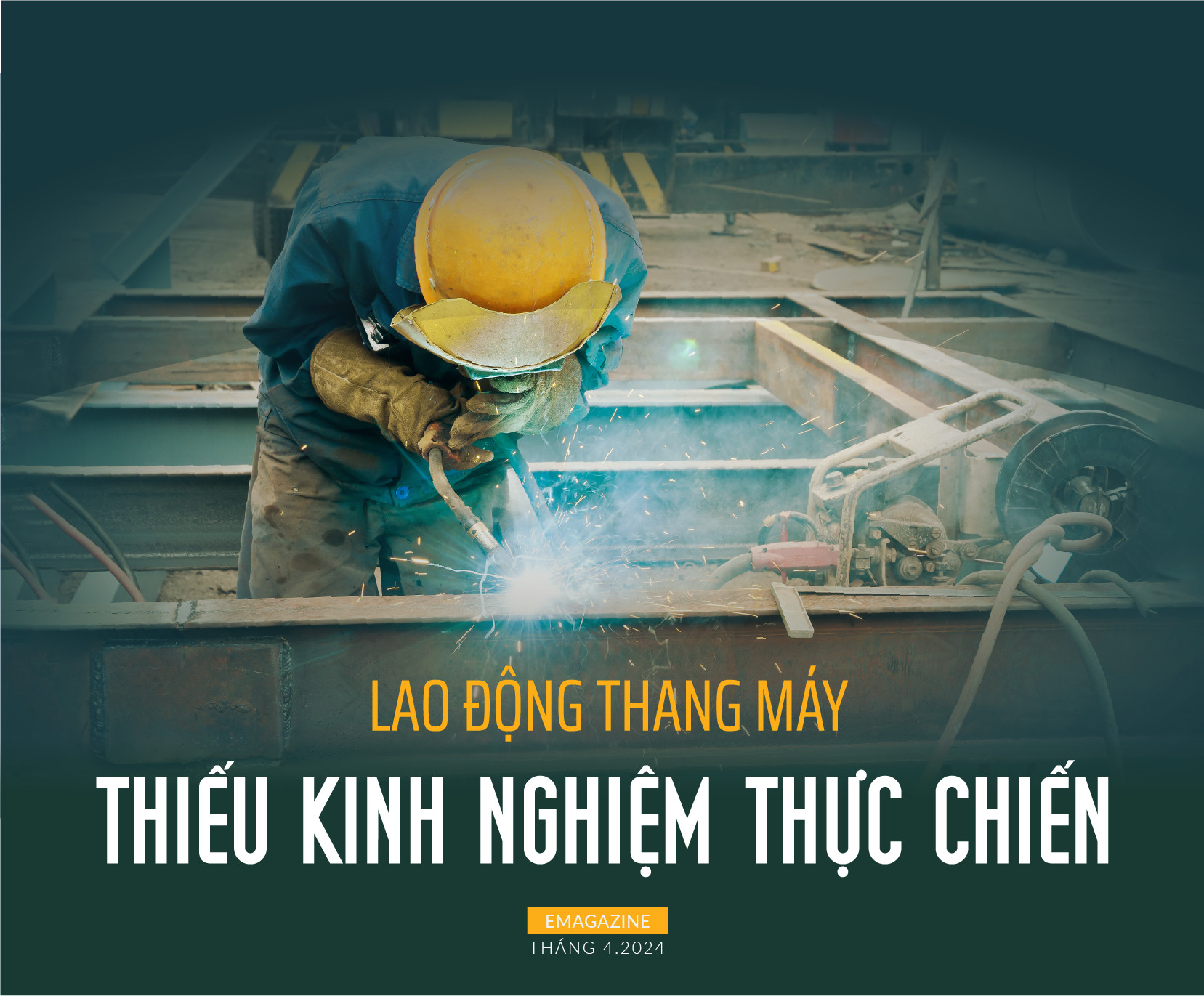
EM – In the context of lacking an official major code, Vietnamese elevator workers not only lack practical experience but also face difficulties acquiring the required specialized knowledge
“I could score a 92 in programming, but when I got into the factory, I didn’t even know how to operate the dashboard”, Gou Wenli – A computerized numerical control graduate from Guizhou College of Electronic Science and Technology. He found it impossible to put his academic credentials to use in the real world. So, now he sells real estate.
The 23-year-old man stated that his major was supposed to correspond with machining parts in factories, but what the teachers taught was not really used in factories.
Guo explained that teachers are mostly undergraduate degree holders, rather than skilled workers, which results in students not learning the necessary skills in practical courses.
China estimates that there will be a labor shortage of nearly 30 million workers in the manufacturing sector by 2025. As a result, the country is encouraging students to pursue engineering majors to address this shortage and maintain its position as the world’s factory.
Nevertheless, the White Paper on the Development of Vocational Education in China published by TUV Rheinland in 2018, reveals that less than 10 percent of teachers in China’s secondary vocational schools have professional manufacturing or business-management experience, and only around 15 percent have undertaken technical training in companies.
This results in tens of millions of vocational school graduates, yet it does not address the deficit of nearly 10 million skilled workers in China.
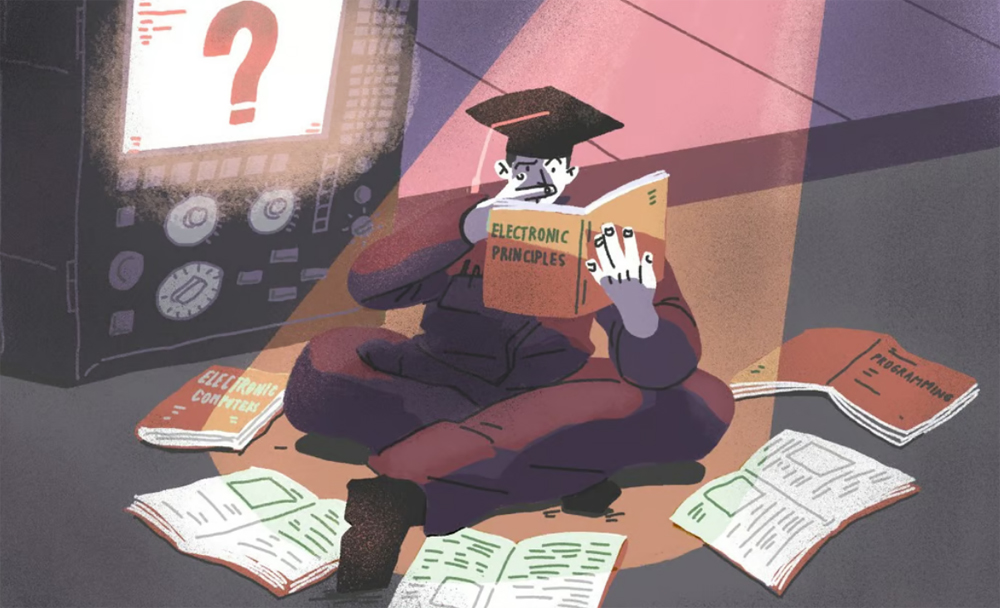
The focus of vocational education on theoretical foundations, along with teachers lacking expertise skills or using outdated teaching equipment and the curriculum system not meeting the enterprise’s demand, is also a challenge that many countries, including Vietnam, are facing
According to a student majoring in mechanical engineering, during the study period, they primarily worked with outdated mechanical lathes, while with modern CNC machines, they mostly observed instructors operating them. Opportunities for hands-on practice at company factories were also quite rare; practical experience was typically gained only after graduation and entering the workforce.

Skills can be categorized into hard skills and soft skills. Hard skills are related to expertise skills – specific technical skills such as education, qualifications, and experience relevant to a particular job. Soft skills often refer to non-technical skills that are essential for employees to organize, plan, and perform their work, as well as understand and adapt to corporate culture,…
Skills help employees complete their work effectively and determine overall job performance. From the perspective of most employers, hard skills are essential for candidates to be interviewed, while soft skills are crucial for getting a job.
However, the lack of skills, discipline, and responsibility in the workplace is one of the weaknesses of Vietnamese labor when participating in international integration. In reality, many businesses continually complain about the quality of their employees, especially in foreign-invested enterprises.
For instance, a survey of 300 enterprises in Ho Chi Minh City found that up to 18.67% struggle to recruit workers, with the main reason accounting for 68.66% being that workers do not meet their requirements
There is a huge gap between training programs’ content and societal needs as well as the reality of production and business.
Meanwhile, for elevator labor in Vietnam, the issue is not only the lack of practical competence but also the problem of specialized knowledge.
Currently, the whole country has about 300 enterprises operating in the elevator sector and 1,500 individuals and organizations related to elevators. However, the major code for elevators has yet to be “born”, which means there is no in-depth training specially focused on the elevator field
Due to this circumstance, elevator manufacturers have had to recruit from related fields like mechatronics, electrical engineering, and mechanics. Nevertheless, most employees, regardless of their educational background, require extensive retraining.
The process of training human resources from elevator-specific knowledge to developing and improving the on-site capabilities of employees causes businesses to lose a lot of time, effort, and money, while business and production operations need to be deployed quickly.
Moreover, after investing in training, many companies face the challenge of employee turnover as skilled workers often move to other companies or form unregulated, unsafe groups.
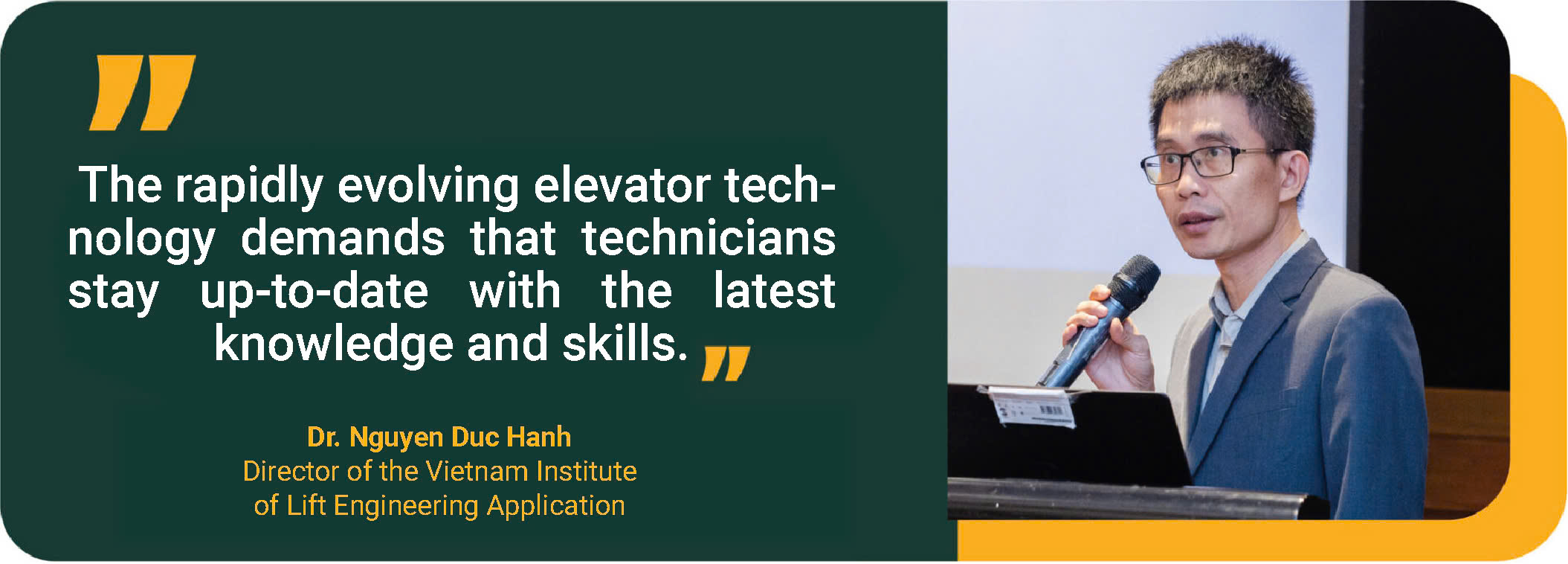
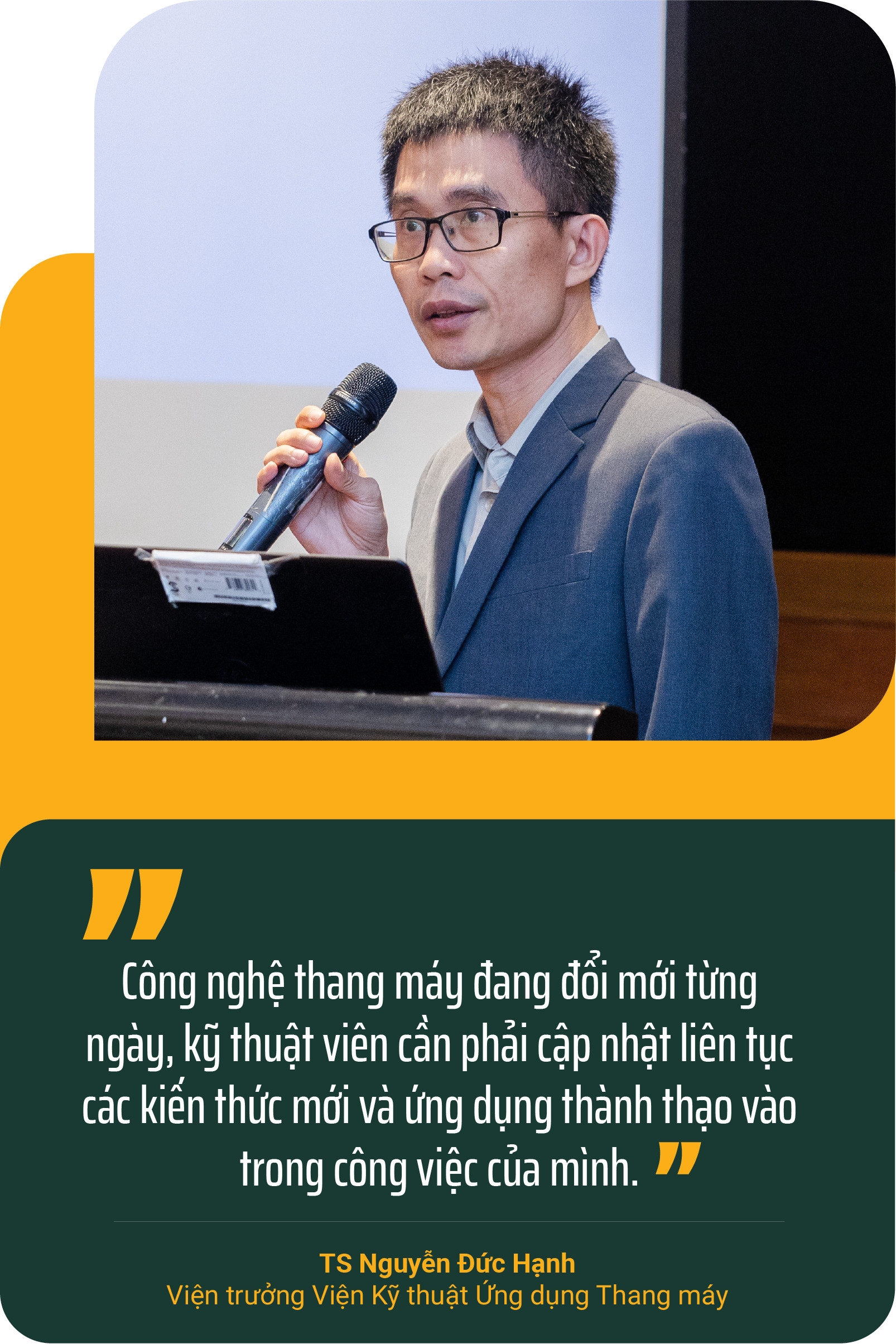
Speaking with Elevator Magazine, Dr. Nguyen Duc Hanh – Director of the Vietnam Institute of Lift Engineering Application emphasized: “The growing demand for elevators necessitates technicians with profound expertise and robust field skills to install, operate, and maintain modern elevator systems. Continuous learning and the adept application of cutting-edge technologies are essential to ensure the efficient and safe functioning of these systems.”
In addition, Dr. Nguyen Duc Hanh highlighted a pressing issue confronting both the Vietnamese and global elevator industry: the shortage of technicians with the expertise to repair and upgrade aging elevator systems.
“Installed decades ago, these older systems have distinct structures and operating principles compared to modern elevators. As such, maintaining and repairing them necessitates technicians with specialized knowledge and hands-on skills,” explained Dr. Nguyen Duc Hanh.
Consequently, there is an urgent need for a comprehensive educational framework to cultivate a pool of elevator technicians equipped with both technical expertise and substantial field experience.
To address the labor challenges faced by both enterprises and the industry, the Vietnam Elevator Association and The Vietnam Institute of Lift Engineering Application have recently taken proactive steps to promote educational cooperation with Korea Lift College (KLC) to establish an Elevator Training Center in Vietnam.
Founded in 2010, Korea Lift College is the world’s only institution specializing in elevator engineering. With nearly 15 years of experience in elevator education and training, the college consistently boasts the highest employment rate among its graduates in South Korea.
It is a major supplier of high-quality elevator manpower for the Korean elevator industry as well as international corporations such as Otis, ThyssenKrupp, and Hyundai.
Under a tripartite cooperation model involving the Association, the College, and enterprises, the Association will take the lead in linking training programs with Korea Lift College and domestic vocational schools in each region, as well as connecting with elevator companies for practical training placements.
Trainees will not only have the opportunity to standardize their skills through theoretical and simulated practical programs but also participate in internships at major domestic and international elevator companies and corporations.
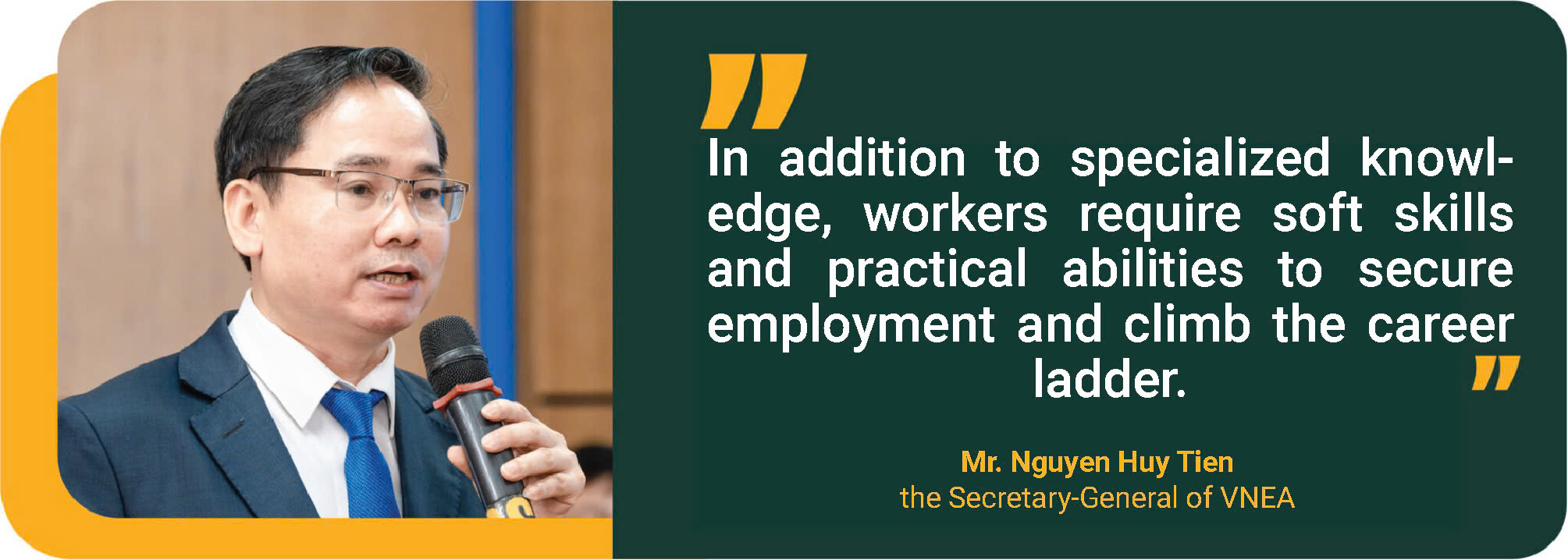

In an interview with Elevator Magazine, Mr. Nguyen Huy Tien, General Secretary of VNEA, highlighted the multifaceted nature of individual capacity. He emphasized three key components: knowledge, skills, and attitude.
Knowledge represents the depth of one’s expertise, skills denote proficiency in executing tasks, and attitude reflects an individual’s mindset toward their work and responsibilities.
Through hands-on experiences at manufacturing plants and construction sites, trainees not only solidify their knowledge, enhance their professional skills, and explore advanced elevator technologies, but also cultivate a positive work attitude, work ethic, discipline, and a sense of responsibility.
A key highlight in vocational education is the combination of theory and practice, along with the modernization of training methods. This approach emphasizes the cultivation of a strong work ethic, discipline, a sense of responsibility, and a deep understanding of processes.
The collaborative training program between VNEA and KLC holds great promise in developing a high-performing and disciplined elevator workforce to meet both domestic and international labor demands. This program empowers individuals to confidently enter the global job market.
Editor: Phương Trang
Designer: Kim San